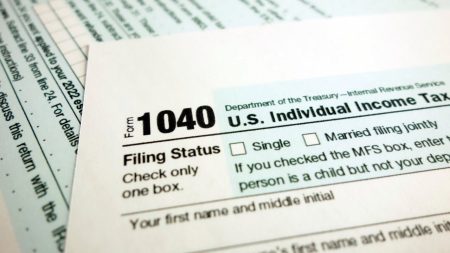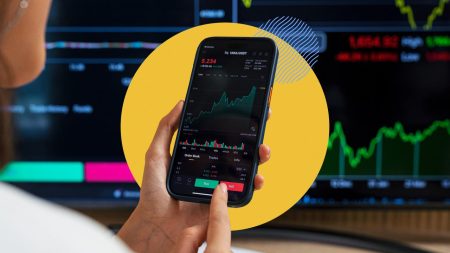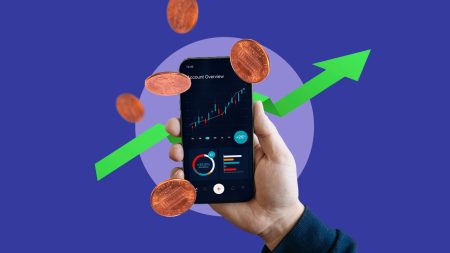Series I bonds have been one of the most popular investments over the last couple years — and it’s no surprise why. They offer the safety of a U.S. government savings bond and an inflation-protected yield that rises as inflation increases, ensuring that you’re not losing purchasing power.
But a number of myths have popped up about buying Series I bonds and how they work. Here are the top five myths about Series I bonds and what you need to know.
Myth #1: You’re limited to $10,000 in Series I bonds annually
It’s true that the U.S. Treasury limits individuals to buying $10,000 in electronic I bonds each year. You can buy these electronic bonds straight from the government at TreasuryDirect.gov. You can buy any amount that you like down to the penny, up to that annual threshold.
However, you can also buy $5,000 in paper I bonds using your federal income tax refund. So an individual could purchase up to $15,000 in I bonds each year, while a family of four might be able to tuck away as much as $60,000 using these two methods. (And here’s how you can use Series I bonds to save for college.)
Of course, this strategy means you’ll need to withhold more from your paycheck or otherwise prepay taxes to the government so that you have enough refunded to purchase the bonds.
Myth #2: You’re limited to $15,000 in Series I bonds annually
Yes, I just stated that individuals can buy $15,000 in Series I bonds between paper and electronic versions, but there’s actually another way that you can buy an unlimited amount, too.
It requires more legwork, and you’ll need to determine if it’s actually worth the worry for you.
If you own a business or even a limited liability company (LLC), you can purchase up to $10,000 in Series I bonds through that entity. In fact, it’s possible to set up a nearly unlimited number of LLCs and therefore buy a nearly unlimited amount of Series I bonds.
Here’s more on this hidden way to buy more Series I bonds and how to set up an LLC.
Myth #3: You won’t get six full months of interest if you buy late
The interest rate on new Series I bonds is valid during two six-month periods: from May to October and November to April. If you buy at virtually any point during the six-month period (see the exclusion in the next myth), then you’ll get the full six months of interest at the stated rate.
For example, some people fret that since they’re buying a bond in June that they’ll receive that period’s interest rate only through October. However, they’ll receive the effective rate for six full months: June, July, August, September, October and November. Then the Series I bond will start receiving whatever rate was announced for the subsequent period for a further six months.
So you’ll always get a full six months of the rate in effect when you purchase a Series I bond.
Myth #4: You can buy up until the I bond’s six-month deadline
This myth is somewhat true, but it’s more a question of timing. If the U.S. Treasury receives your payment and registers your bond by the deadline for the current interest rate (April 30 or October 31 of each year), then you’ll receive that rate for a full six months.
The real concern is that the U.S. Treasury needs a few days to issue the bond. So if you want to sneak in under the wire, you need to leave yourself at least a few days before the deadline to place your order. Otherwise, your bond will have the next period’s interest rate.
So if you want to be sure to get the current rate, then don’t cut it close on the timing.
Myth #5: You must be invested a full month to get a full month’s interest
It’s reasonable to think that you’d need to be invested for a full month to get a full month’s worth of interest, but in the case of I bonds, you don’t need to be. If you buy the bond any time in the month and then hold it through month-end, you’ll get full credit for holding for the entire month.
Or as TreasuryDirect says: “I bonds earn interest from the first day of the month you buy them.”
So if you buy April 20, for example, and hold until May 1, you’ll get credit for the entire month of April. Interest is credited to your account on the first of the next month. So you can hold the bond for the last few days of the month and get interest for the whole month, if you’re buying.
However, if you’re selling, you don’t get anything extra if you don’t hold through the month.
So if you’re looking to max out your effective interest, you’d want to buy late in the month and sell early in the month. Then you can stuff that cash in a high-yield savings account or another high-yield alternative to a Series I bond.
Bottom line
Those looking to invest in Series I bonds should know some of the finer points of how the bonds work and why it’s one of the most interesting low-risk investments out there. While inflation protection is a nice feature, it’s important to remember that rates will decline with inflation, too.
Read the full article here
















